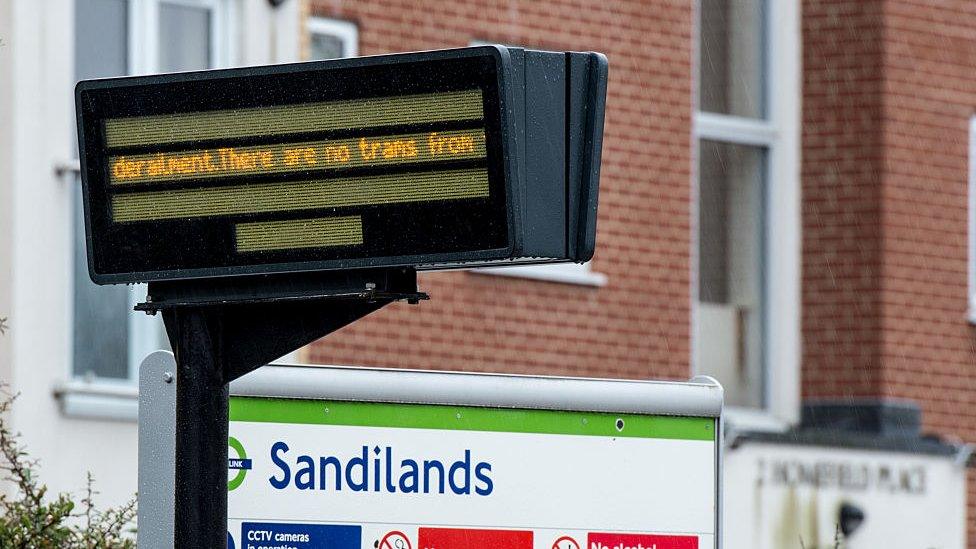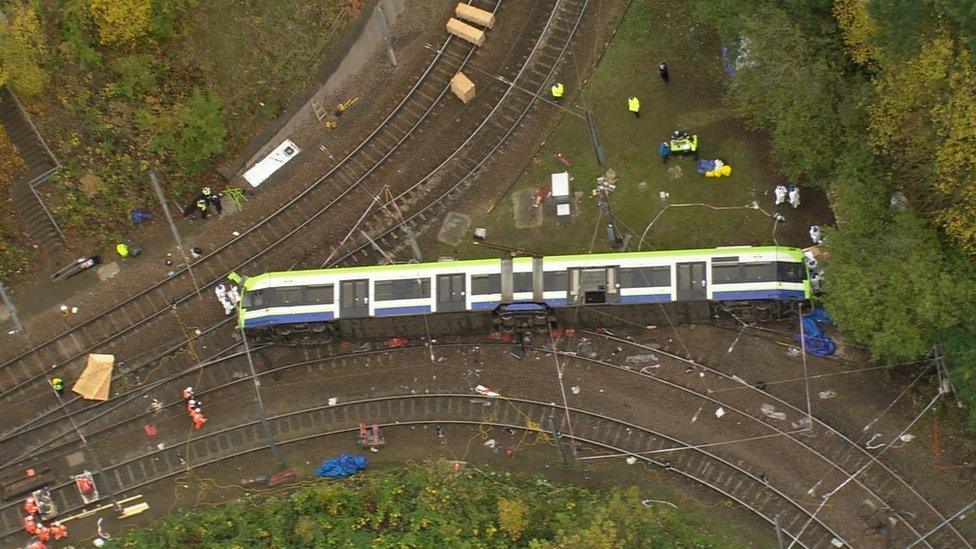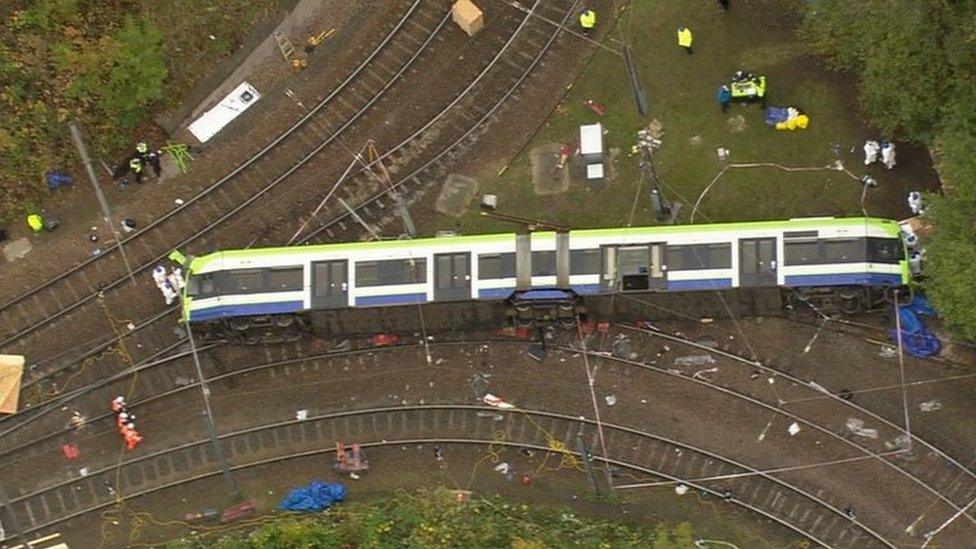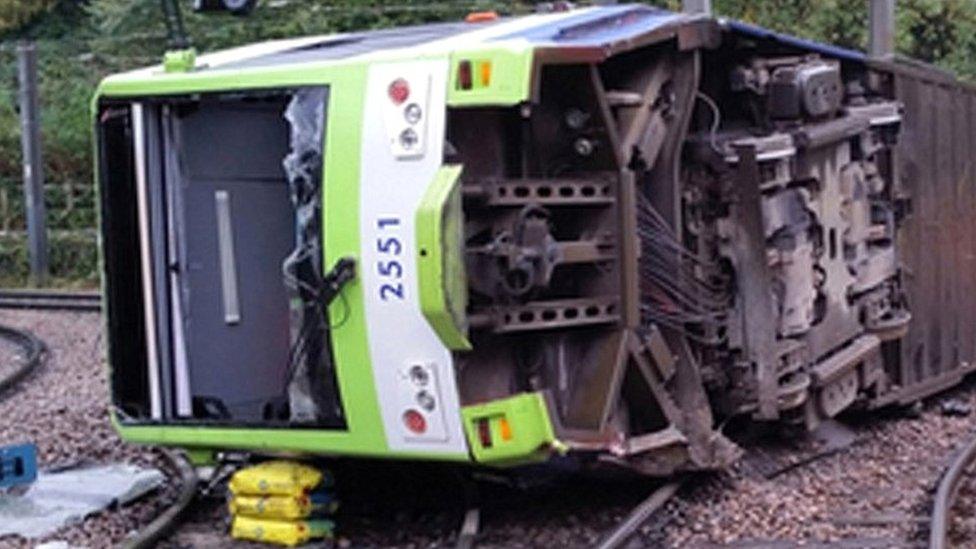Croydon tram crash inquest: Driver may have had micro-sleep
- Published

The tram derailed at about 06:00 GMT on 9 November 2016
The driver of a tram that crashed in Croydon, killing seven people, could have been "disorientated" following a micro-sleep, an inquest jury has heard.
Simon French, of the Rail Accident Investigation Branch (RAIB), said there was evidence the driver thought he was travelling in the opposite direction.
Mr French earlier described the event of November 2016 as "fast and violent".
It was "absolutely clear within hours" the crash was caused by excessive speed, he added.
He told the inquest if there had been a micro-sleep, "it is quite possible that the driver was fatigued", which could be a result of "cumulative sleep deprivation and insufficient sleep the previous night".
He also showed the hearing a video reconstruction of the crash.
The film, of a tram emerging from a tunnel at 78km/h (48mph) before slowing down to 73km/h (45mph), was shown first in slow motion and then at full speed.
"The consequence of the tram hitting the curve at 73km/h was more than the capability of the tram to stay upright," Mr French said.
As it reached a bend, the tram started to tip over and slid on its side.
Mr French told the inquest, being held at Croydon Town Hall: "From this moment onwards we start to see all sorts of marks, damage to sleepers, damage to concrete drainage covers."
He said by studying the clues provided by the damaged infrastructure, the RAIB was "very confident" about the sequence of events. Mr French said his team had arrived at the site at about 10:00 GMT, four hours after the crash, and worked there for three days and three nights.
He added that the braking applied by the driver was "insufficient" to slow to a safe speed and said that if the curve of the track had been "more gentle" the tram would not have overturned.

The tram tipped over near Sandilands tram stop
Mr French said: "Witnesses spoke of it like being inside a washing machine, being thrown, it was a very sudden event.
"Speaking for myself I do find that quite shocking. It is fast and quite violent, it takes place in a matter of seconds."
The normal speed for the curve out of the tunnel at Sandilands in south London, where the tram derailed, was 50km/h (31mph) - with a speed limit of 20km/h (12.5mph) at the bend, the inquest jury was told.
The passengers who were killed had all been thrown or partially thrown from the tram after the glass in the windows and doors had shattered.
In addition to the six men and one woman who died, 51 passengers were taken to hospital, eight with life-changing injuries.

Dane Chinnery, 19
Donald Collett, 62
Robert Huxley, 63
Philip Logan, 52,
Dorota Rynkiewicz, 35
Philip Seary, 57
Mark Smith, 35

Mr French also told the inquest jury there were apparent "culture issues" at Tram Operations Ltd (TOL) that meant drivers were unwilling to admit to speeding or other errors.
"If you reported speeding there was an automatic move to a disciplinary procedure," he added.
There was a previous incident 10 days before the crash when a driver hit the same bend at 45km/h (27mph) and very nearly overturned the tram, but the matter was insufficiently investigated, the jury heard.
The hearing is expected to last 13 weeks.
Related topics
- Published18 May 2021

- Published17 May 2021

- Published16 May 2021
- Published9 November 2016
